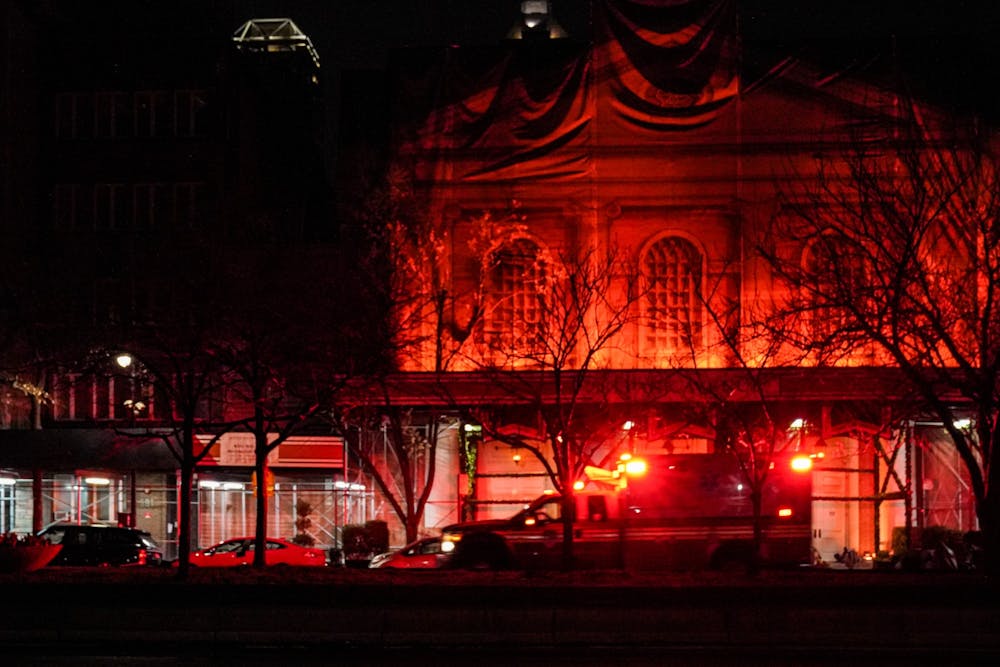As a Manhattan native and now an emergency medical technician in the Bronx, rising Wharton sophomore Stuart Harris likens his job to watching a “horror movie” despite the decrease in the city's COVID-19 cases since the spring.
Harris — one of the youngest staff members at Senior Care Emergency Medical Services — has been spending up to five days a week in an ambulance since late June responding to emergency calls from patients primarily suffering severe chest pain and shortness of breath. He stabilizes patients’ vitals, performs necessary life-saving interventions, such as CPR, and gives patients medication to aid their discomfort.
In addition to receiving emergency calls about severe chest pain and lack of oxygen, Harris continues to respond to COVID-19 patients from the city’s senior care centers and nursing homes. In the United States, more than 40% of coronavirus deaths have been linked to nursing homes and long-term care facilities.
Nursing homes were heavily hit by the virus in March and April, Harris said. A field training officer described the pandemic to Harris as a “merry-go-round of death” that entailed wheeling in critical patients with high fevers, seeing “dead person after dead person” in the emergency room, and witnessing nurses frantically perform CPR and intubation services.
“The thing that’s most important is that in a lot of these cases, time is of the essence," Harris said. "The more time passes, the more deaths you have."
While New York has seen a steep decrease in new coronavirus cases and deaths since late spring, various regions across the United States — currently home to more than 4.3 million infections and 149,000 deaths — continue to face a daily spike in confirmed cases with a looming threat of a second wave.

Rising Wharton sophomore Stuart Harris has been working as an EMT in New York City since late June. (Photo from Stuart Harris)
Harris continues to witness the shadow of the virus linger in the city — months after the city survived its most devastating impact to date. Most recently, he aided an elderly woman into the New York-Presbyterian hospital after she had suffered from a stroke prompted by a COVID-19 infection. Harris said she was lying on the floor and unable to speak.
RELATED:
Lizzo treats Hospital of University of Pennsylvania workers with lunch deliveries
Hospital of the University of Pennsylvania is treating its first coronavirus patient
“She looked like a shell of herself,” Harris said. He described the experience, and some of his prior EMT calls, as “a bad dream.”
Most days begin in the early mornings, while his night shifts end around 5 a.m. As part of his daily routine, Harris rides in an ambulance with a fellow first responder and witnesses the city's "bumper-to-bumper" traffic immediately make way for the ambulance as its siren blares during an emergency dispatch.
While transporting elderly patients to the nearest hospital, which averages 15 to 20 minutes from a patient’s assisted living center, Harris said he sometimes finds that he is the first person the patient has had a conversation with in months.
“I try to show people as much compassion as possible because one day, I might be sitting in the same seat," Harris said. "I might be dying, and I would hope that the people who are transporting me to the hospital would treat me the same way that I would treat these people. So it’s like paying it forward in a way.”
Before arriving to Penn, Harris spent a gap year volunteering in an Israeli military program and working as his team's medic, which prompted his interest in emergency medicine.
“There are thousands and thousands of people in New York City who are sitting in their room watching TV for years. And as a 20-year-old guy, I take my health for granted,” he said. “It’s helped me understand that we need to take care of our elders better, and that it doesn’t hurt to go to a rehab center or a nursing home for an hour a week.”
But the job comes at a price, he said.
Although he finds support within his family and from the conversations he has with patients, Harris found that he has to compartmentalize his work as an EMT from his personal life in order to prevent himself from being mentally overwhelmed by the cases he witnesses on a daily basis.
He said he must disconnect from emotions such as stress, anxiety, and grief when interacting with patients.
“You have to realize you can’t get overstimulated or worked up and stressed, because this is a job," Harris said. "I have to take care of these people, and if I start freaking out, I won’t be able to do a good job for them.”
EMTs battle high levels of acute and chronic stress as well as high rates of depression and substance abuse according to a 2019 study, which concluded that rates of suicide among EMTs are significantly higher than among the general public. COVID-19 has only deepened the mental health crises and burnout syndrome that many front-line medical workers continue to battle.
Not only is Harris aware of the mental health risks but added that every first responder, nurse, and doctor that comes into contact with a COVID-19 patient takes the risk of contracting the disease.
“Working during this pandemic is pretty scary. Responding to calls and having to wear all the proper Personal Protective Equipment knowing that if this equipment fails me, I’m putting myself in danger. I’m doing this because you have to help people who need it the most, you know,” Harris said.
Tomorrow’s shift begins at 9 a.m.









